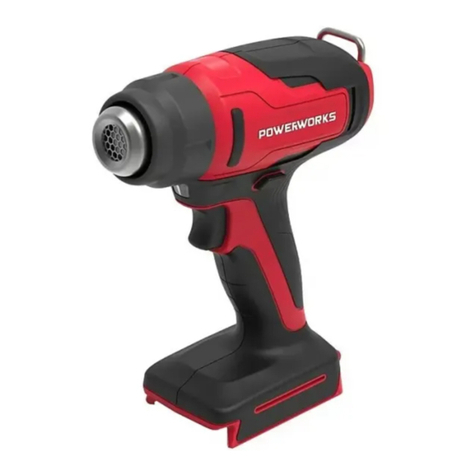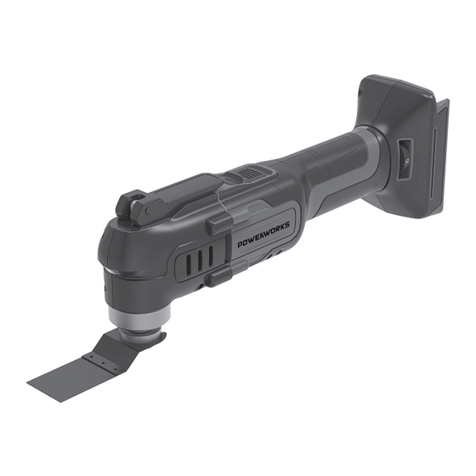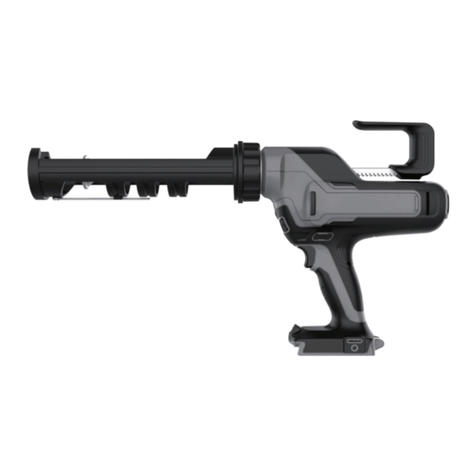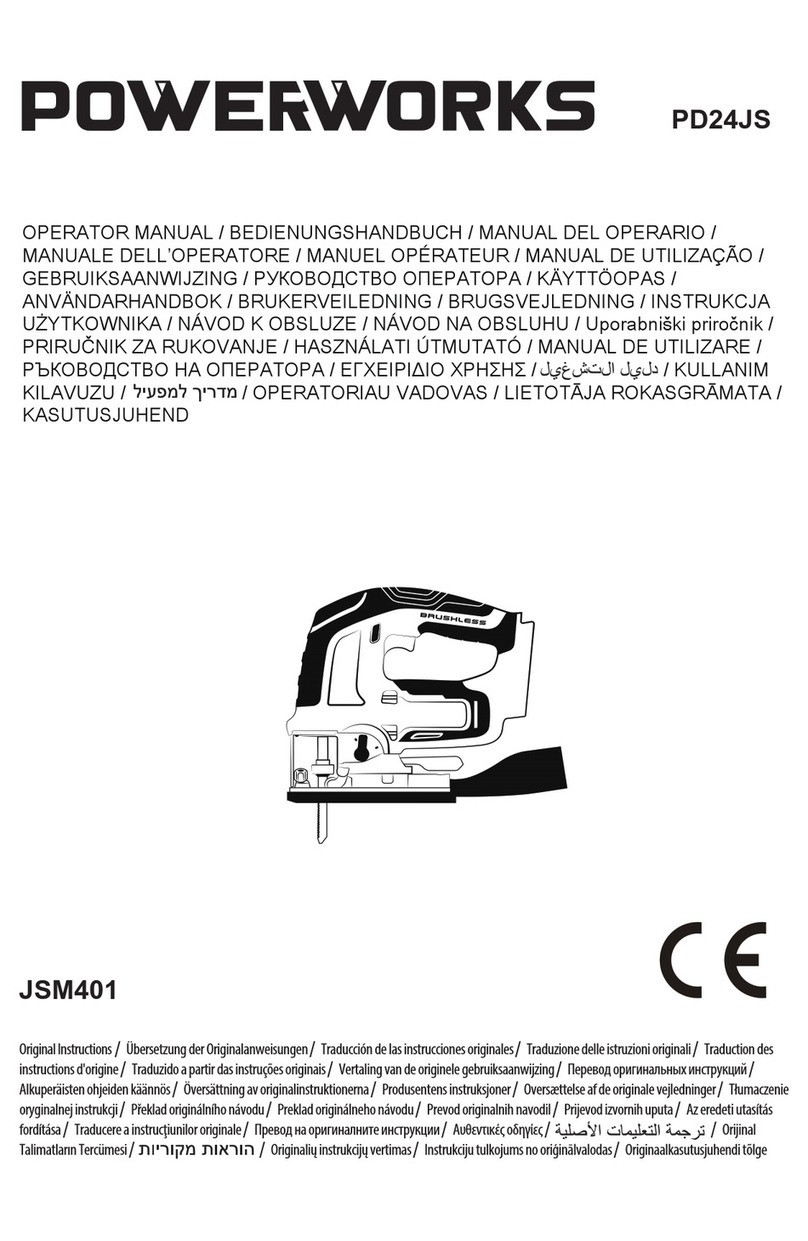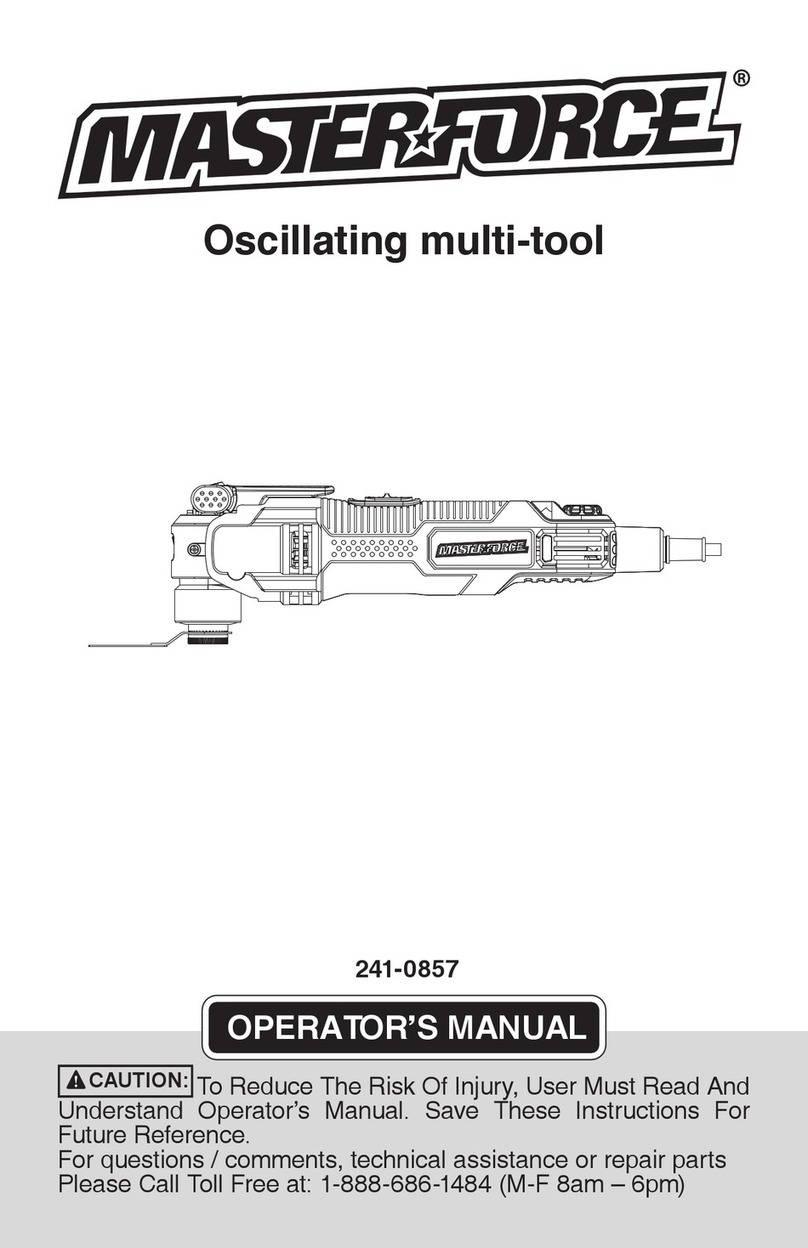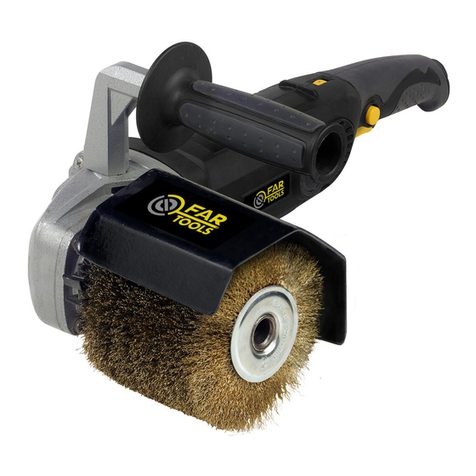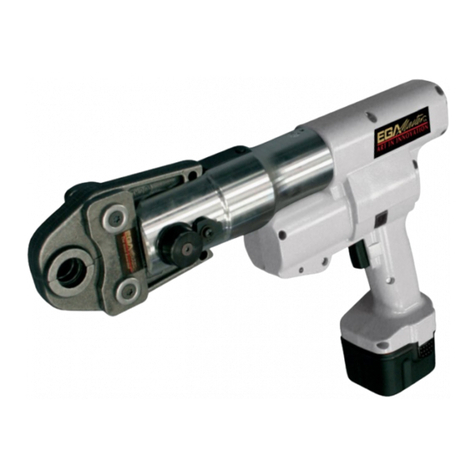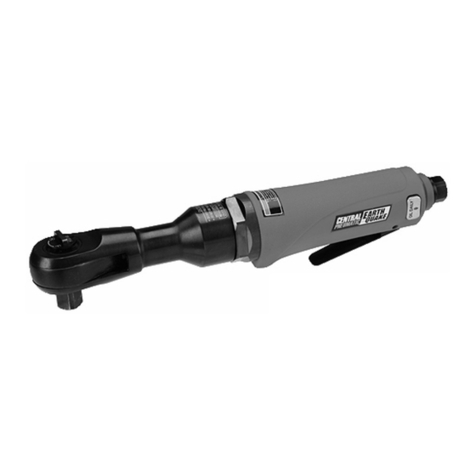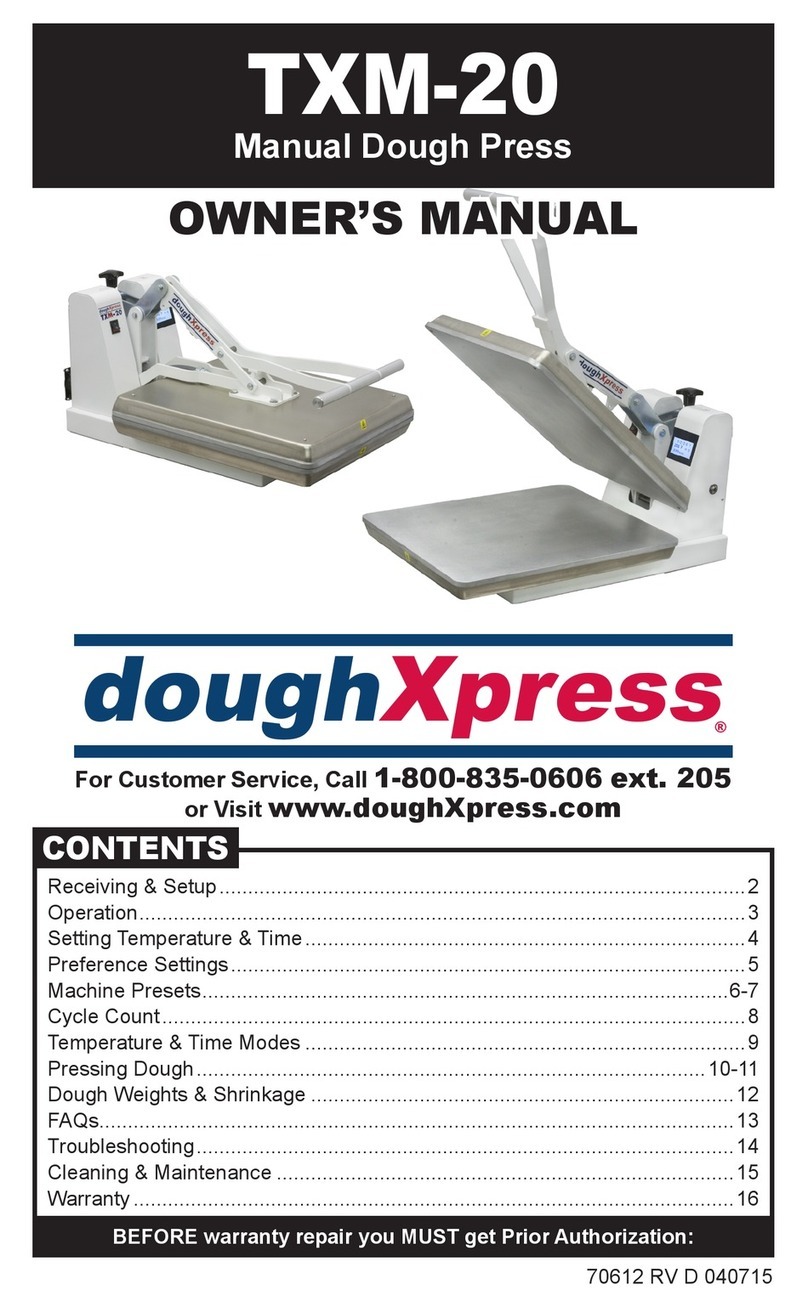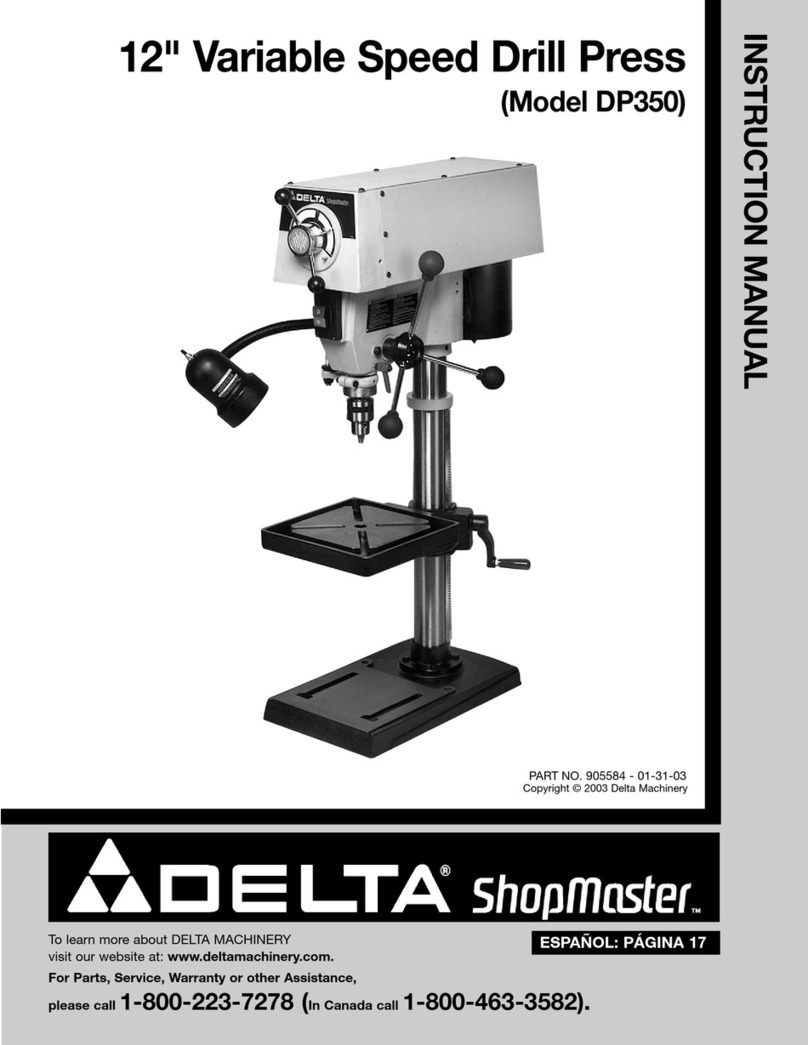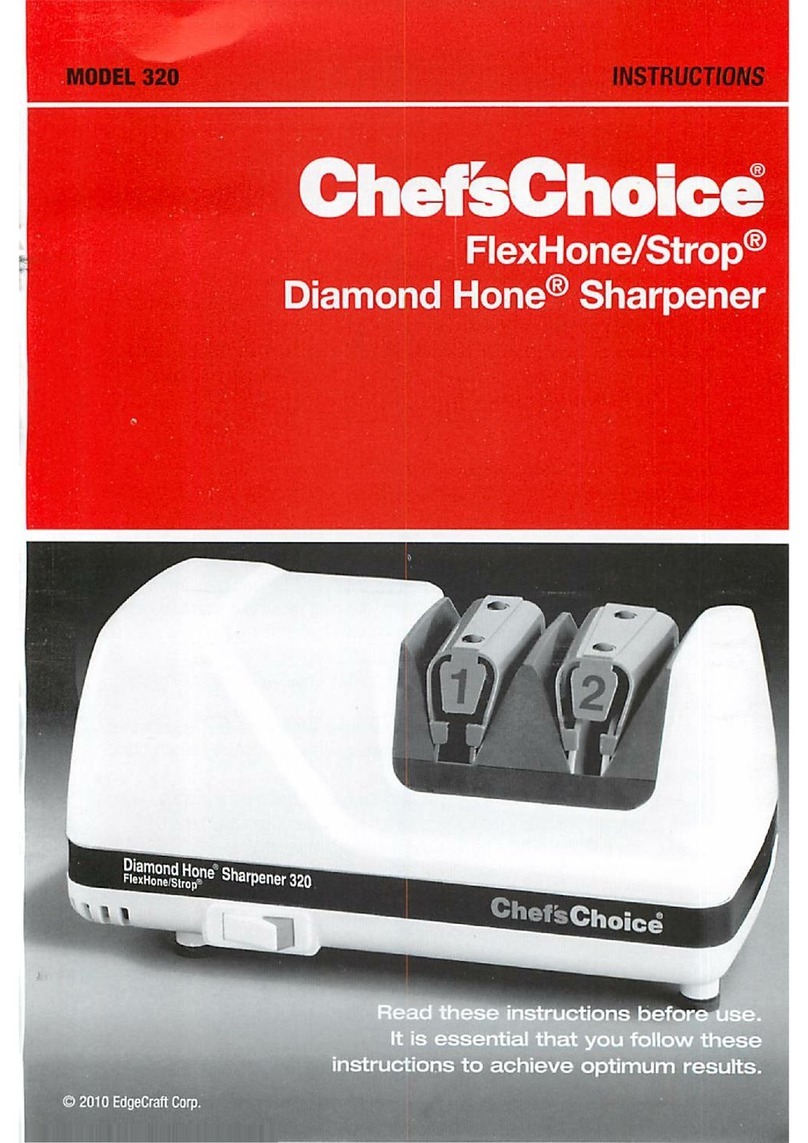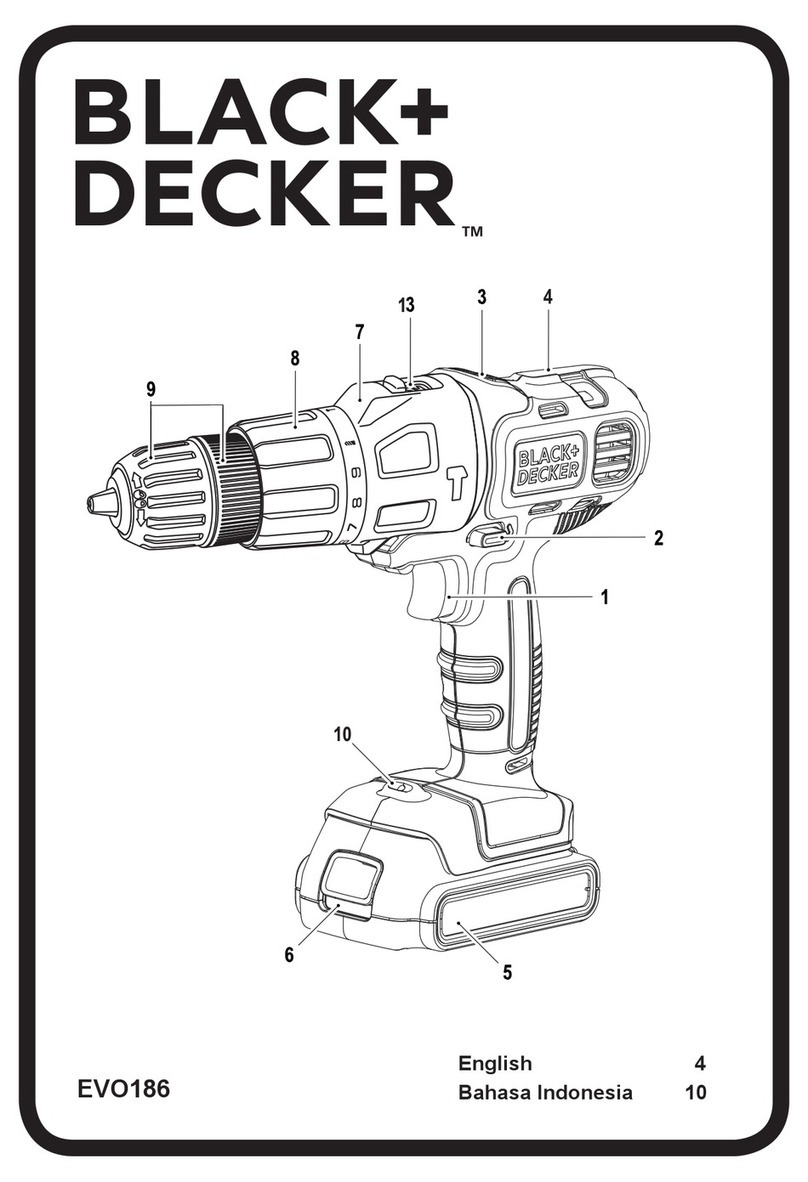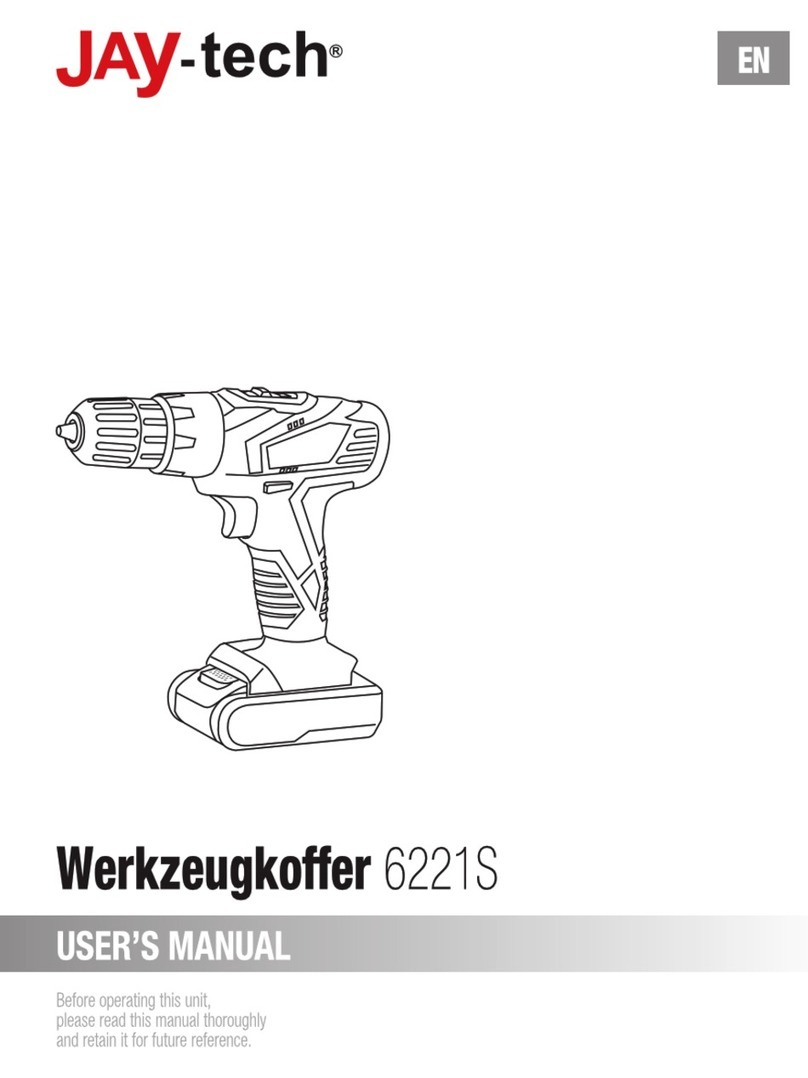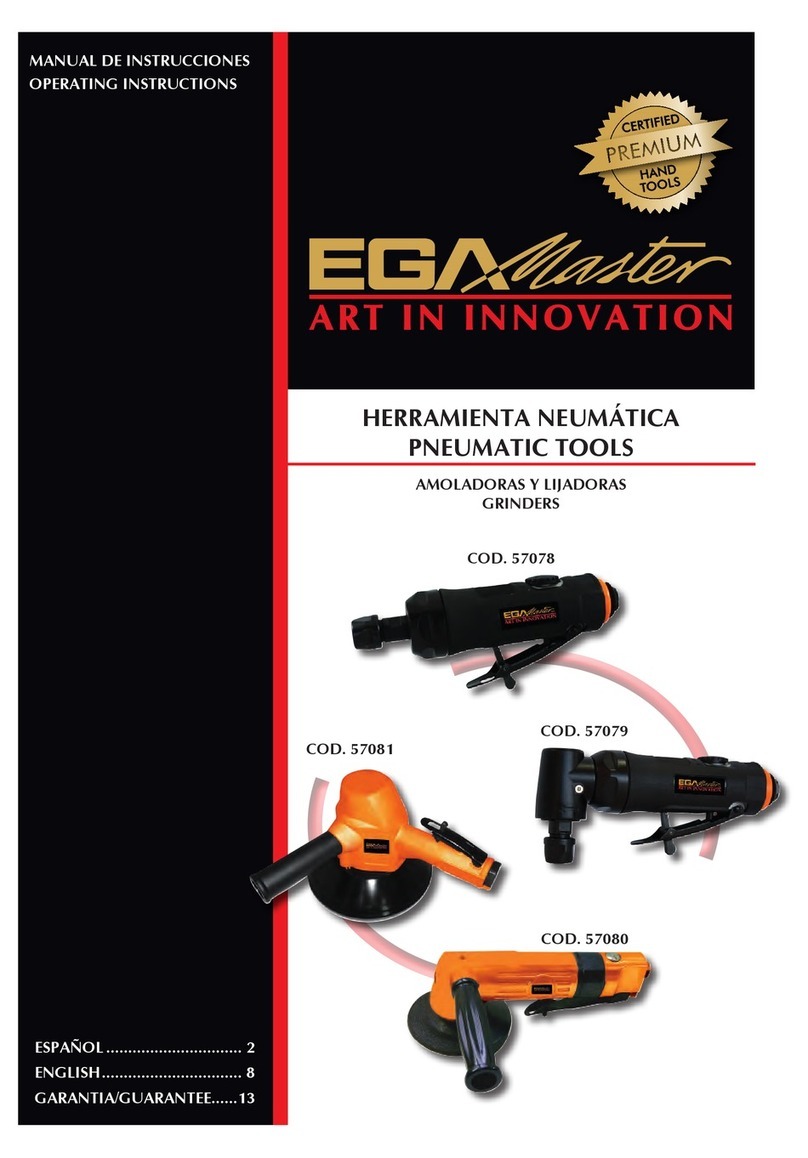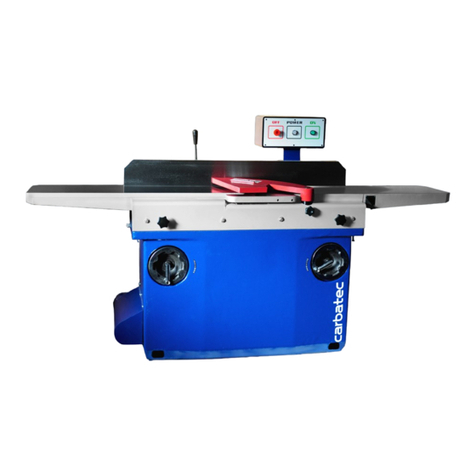Power works P24IN User manual

PAM301
OPERATOR MANUAL / BEDIENUNGSHANDBUCH / MANUAL DEL OPERARIO /
MANUALE DELL’OPERATORE / MANUEL OPÉRATEUR / MANUAL DE UTILIZAÇÃO /
GEBRUIKSAANWIJZING / РУКОВОДСТВО ОПЕРАТОРА / KÄYTTÖOPAS /
ANVÄNDARHANDBOK / BRUKERVEILEDNING / BRUGSVEJLEDNING / INSTRUKCJA
UŻYTKOWNIKA / NÁVOD K OBSLUZE / NÁVOD NA OBSLUHU / Uporabniški priročnik /
PRIRUČNIK ZA RUKOVANJE / HASZNÁLATI ÚTMUTATÓ / MANUAL DE UTILIZARE /
РЪКОВОДСТВО НА ОПЕРАТОРА / ΕΓΧΕΙΡΙΔΙΟ ΧΡΗΣΗΣ / / KULLANIM
KILAVUZU / / OPERATORIAU VADOVAS / LIETOTĀJA ROKASGRĀMATA /
KASUTUSJUHEND
OriginalInstructions / ÜbersetzungderOriginalanweisungen/ Traduccióndelasinstruccionesoriginales/ Traduzione delleistruzionioriginali/ Traductiondes
instructionsd'origine/ Traduzidoapartir dasinstruçõesoriginais/ Vertalingvande originelegebruiksaanwijzing/ Переводоригинальных инструкций/
Alkuperäistenohjeidenkäännös/ Översättningavoriginalinstruktionerna/ Produsentensinstruksjoner/ Oversættelseafdeoriginalevejledninger/ Tłumaczenie
oryginalnej instrukcji/ Překlad originálníhonávodu/ Prekladoriginálnehonávodu/ Prevodoriginalnih navodil/ Prijevodizvornihuputa/ Azeredetiutasítás
fordítása/ Traducereainstrucţiunilororiginale/ Превод наоригиналните инструкции/ Αυθεντικέςοδηγίες/ / Orijinal
TalimatlarınTercümesi/ / Originaliųinstrukcijų vertimas/ Instrukcijutulkojumsnooriģinālvalodas/ Originaalkasutusjuhenditõlge
P24IN

1 Description.........................................4
1.1 Purpose.............................................................. 4
1.2 Overview........................................................... 4
2 Installation......................................... 4
2.1 Unpack the machine.......................................... 4
2.2 Install the battery pack.......................................4
2.3 Remove the battery pack................................... 4
2.4 Select the mode..................................................4
3 Operation........................................... 5
3.1 Start / stop the machine..................................... 5
4 Maintenance.......................................5
4.1 Clean the machine............................................. 5
5 Technical data....................................5
6 Troubleshooting.................................6
7 Warranty............................................6
8 EC Declaration of conformity..........6
3
English EN

1 DESCRIPTION
1.1 PURPOSE
The machine is intended for inflating air mattresses, toys,
sport ball, tires, floats.
1.2 OVERVIEW
Figure 1~7.
1Carrying Handle
2Connector Port
3Deflating Port
4Air Hose ( low
pressure)
5Raft Nozzle
6Air Hose ( high
pressure)
7Ball Needle
8Presta Valve Adaptor
9Battery Release
Button
10 Power Cord
11 Quick connect valve
adaptor
12 ON/OFF Button
13 Mode Selection
Button
14 Digital Pressure
Display
15 Air Pressure Increase
Button
16 Air Pressure
Reduction Button
17 Start / Break Button
18 LED Light Button
2 INSTALLATION
2.1 UNPACK THE MACHINE
WARNING
Make sure that you correctly assemble the machine before
use.
WARNING
• If parts of the machine are damaged, do not use the
machine.
• If parts are missing, do not operate the machine.
• If parts are damaged or missing, contact the service
center.
1. Open the package.
2. Read the documentation provided in the box.
3. Remove all the unassembled parts from the box.
4. Remove the machine from the box.
5. Discard the box and packing material in compliance with
local regulations.
WARNING
For your personal safety, do not insert battery before the
tool is assembled completely.
2.2 INSTALL THE BATTERY PACK
Figure 2.
WARNING
• If the battery pack or charger is damaged, replace the
battery pack or the charger.
• Stop the machine and wait until the motor stops before
you install or remove the battery pack.
• Read, know, and do the instructions in the battery and
charger manual.
1. Align the lift ribs on the battery pack with the grooves in
the battery compartment.
2. Push the battery pack into the battery compartment until
the battery pack locks into place.
3. When you hear a click, the battery pack is installed.
TIP
This machine can also connect to the 12V power outlet
directly. Insert the 12V power cord into the 12V power
outlet, this will automatically provide continuous 12V
current to your inflator.
Figure 3.
2.3 REMOVE THE BATTERY PACK
1. Push and hold the battery release button.
2. Remove the battery pack from the machine.
2.4 SELECT THE MODE
High Pressure mode
Figure 4.
NOTE
Choose the high pressure mode to start the inflator when
you connect the air hose (high pressure) to the item.
1. Connect the quick connect valve adaptor to item you are
inflating.
2. Push down the valve lock lever to secure the connection.
Low Pressure Mode
Figure 5.
1. Insert low pressure air hose to the connector port and
rotate counterclockwise.
2. Use your desired nozzle to inflate the item.
NOTE
Choose the low pressure mode to start the inflator when you
connect the air hose (low pressure) to the item.
Deflating Mode
1. To deflating item, insert low pressure air hose to the air
outlet.
2. Use your desired nozzle to deflate the item.
4
English
EN

NOTE
Set the inflator to low pressure mode to deflate.
Figure 6.
3 OPERATION
WARNING
Always wear eye protection.
WARNING
Do not use any attachments or accessories not
recommended by the manufacturer of this product.
3.1 START / STOP THE MACHINE
Figure 7.
WARNING
Always avoid over-inflation and never leave the inflator
unattended when in use.
1. Press the On/Off button.
2. Push the mode selection button to choose high pressure or
low pressure mode.
3. The digital pressure display will show the current
pressure (in 1 PSI increments) of the item you are
inflating on the upper section of the LCD Screen.
4. Press air pressure increase button to increase PSI, or press
air pressure reduction button to decrease PSI.
5. To start the inflator, push the start / break button.
6. To change the target PSI level, push the start / break
button again and the adjust level.
7. To stop the inflator before it reaches the target PSI level,
push the start / break button. To resume inflation, simply
press the button again. Press the On/Off button to turn the
inflator off. The power automatically cycles off after five
minutes of no activity.
NOTE
• When you work under dim ambient, press the LED light
button to turn on the light.
• When the LCD readout screen is displaying the target
PSI, the LCD readout will flash 3 times at the desired
preset level.
• The pressure value of the low pressure mode is fixed
and cannot be adjusted.
• The inflator will shut off automatically at the desired
target PSI level that you have programmed into the
target PSI setting.
• The inflator has a tolerance of -5 PSI and will
automatically shut off accordingly.
• If the current pressure of the item you are inflating is
greater than the target PSI, the inflator will not turn on.
4 MAINTENANCE
WARNING
Remove the battery pack from the machine before
maintenance.
WARNING
Do not use strong solvents or detergents on the plastic
housing or components.
4.1 CLEAN THE MACHINE
CAUTION
The machine must be dry. Humidity can cause risks of
electrical shocks.
• Clear the unwanted material out of the air vent with a
vacuum cleaner.
• Do not spray the air vent or put the air vent in solvents.
• Clean the housing and the plastic components with a
moist and soft cloth.
5 TECHNICAL DATA
Voltage 24 V
Working Pressure (max)160 PSI
Weight Without Battery 4.34 lbs. (1.97 kg)
Air Hose (high pressure) 80 cm
Air Hose (low pressure) 42 cm
Measured sound pressure
level
LPA = 79.07 dB(A) , K = 3
dB(A)
Measured sound power level LWA = 94 dB(A)
Guaranteed sound power lev-
el
LWA.d = 97 dB(A)
Battery Model P24B2/P2448B2 and other
BAM series
Charger Model P2448C and other CAM ser-
ies
The recommended ambient temperature range:
Item Temperature
Machine storage temperature
range
32°F (0°C) - 113°F (45°C)
Machine operation tempera-
ture range
32°F (0°C) - 113°F (45°C)
Battery charging temperature
range
39°F (4°C) - 104°F (40°C)
5
English EN

Item Temperature
Charger operation tempera-
ture range
39°F (4°C) - 104°F (40°C)
Battery storage temperature
range
32°F (0°C) - 113°F (45°C)
Battery discharging tempera-
ture range
32°F (0°C) - 113°F (45°C)
6 TROUBLESHOOTING
Problem Possible cause Solution
The inflator does
not work.
The fan has stop-
ped working to
protect internal
circuits.
Turn off the infla-
tor, wait for the
tool and battery to
cool down, then
start the tool
again.
The battery pack is
out of power.
Charge the battery
pack.
The machine
smokes during op-
eration.
The machine has
damage.
1. Immediately
stop the ma-
chine.
2. Remove the
battery pack.
3. Contact the
service center.
7 WARRANTY
(The full warranty terms and conditions can be found on
Powerworks website)
The Powerworks warranty is 3 years on the product, and 2
years on batteries (consumer/private usage) from the date of
purchase. This warranty covers manufacturing faults. A faulty
product under warranty might be either repaired or replaced.
A unit that has been misused or used in other ways then
described in the owner’s manual might be rejected for
warranty. Normal wear, and wear parts are not considered as
warranty. The original manufacturer warranty is not affected
by any additional warranty offered by a dealer or retailer.
A faulty product must be returned to the point of purchase in
order to claim for warranty, together with the proof of
purchase (receipt).
8 EC DECLARATION OF
CONFORMITY
Name and address of the manufacturer:
Name: GLOBGRO AB
Globe Group Europe
Address: Riggaregatan 53, 211 13 Malmö, Sweden
Name and address of the person authorised to compile the
technical file:
Name: Micael Johansson
Address: Riggaregatan 53, 211 13 Malmö, Sweden
Herewith we declare that the product
Category: Inflator
Model: PAM301
Serial number: See product rating label
Year of Construction: See product rating label
• is in conformity with the provisions of the following
other EC-Directives:
• 2006/42/EC
• 2014/30/EU
• 2011/65/EU & (EU)2015/863
• 2000/14/EC
Furthermore, we declare that the following (parts/clauses of)
European harmonised standards have been used:
EN 62841-1, EN 1012, EN ISO 12100, EN 55014-1, EN
55014-2,EN ISO 3744,IEC 62321-3-1, IEC 62321-4, IEC
62321-5, IEC 62321-6, IEC 62321-7-1, IEC 62321-7-2, IEC
62321-8
Conformity assessment method to Annex VI Directive
2000/14/EC.
Measured sound power level LWA: 94 dB(A)
Guaranteed sound power lev-
el
LWA.d : 97 dB(A)
Place, date: Malmö Signature: Ted Qu, Quality Di-
rector
02.02.2022
6
English
EN

1 Beschreibung......................................8
1.1 Verwendungszweck........................................... 8
1.2 Übersicht............................................................8
2 Montage..............................................8
2.1 Maschine auspacken..........................................8
2.2 Akkupack einsetzen...........................................8
2.3 Akkupack entfernen...........................................8
2.4 Modus wählen....................................................8
3 Bedienung...........................................9
3.1 Die Maschine starten/stoppen............................9
4 Wartung und Instandhaltung...........9
4.1 Maschine reinigen..............................................9
5 Technische Daten...............................9
6 Fehlerbehebung...............................10
7 Garantie........................................... 10
8 EG-Konformitätserklärung........... 10
7
Deutsch
DE

1 BESCHREIBUNG
1.1 VERWENDUNGSZWECK
Die Maschine dient dem Aufblasen von Luftmatratzen,
Spielsachen, Sportbällen, Reifen und Flößen.
1.2 ÜBERSICHT
Abbildung 1~7.
1Tragegriff
2Blasanschluss
3Luftauslass
4Luftschlauch
(niedriger Druck)
5Hochdruckventil
6Luftschlauch (hoher
Druck)
7Ballnadelventil
8Reifenventil
9Akkupack-
Entriegelungstaste
10 Stromkabel
11 Schnellanschluss-
Ventiladapter
12 EIN-/AUS-Taste
13 Modus Auswahltaste
14 Digitale
Druckanzeige
15 Taste zur Erhöhung
des Luftdrucks
16 Taste zur
Verringerung des
Luftdrucks
17 Start-/Pausetaste
18 LED-Lichttaste
2 MONTAGE
2.1 MASCHINE AUSPACKEN
WARNUNG
Vergewissern Sie sich, dass Sie die Maschine vor dem
Gebrauch richtig montiert haben.
WARNUNG
• Bei beschädigten Maschinenteilen dürfen Sie die
Maschine nicht verwenden.
• Bei fehlenden Teilen dürfen Sie die Maschine nicht
verwenden.
• Wenn Teile beschädigt sind oder fehlen, wenden Sie
sich an die Servicestelle.
1. Öffnen Sie die Verpackung.
2. Lesen Sie die beiliegende Dokumentation.
3. Entnehmen Sie alle unmontierten Teile aus dem Karton.
4. Nehmen Sie die Maschine aus dem Karton.
5. Entsorgen Sie den Karton und das Verpackungsmaterial
gemäß den örtlichen Vorschriften.
WARNUNG
Zu Ihrer eigenen Sicherheit dürfen Sie den Akkupack nicht
einsetzen, bevor das Werkzeug vollständig
zusammengebaut ist.
2.2 AKKUPACK EINSETZEN
Abbildung 2.
WARNUNG
• Wenn der Akkupack oder das Ladegerät beschädigt ist,
ersetzen Sie den Akkupack oder das Ladegerät.
• Stoppen Sie die Maschine und warten Sie, bis der
Motor stoppt, bevor Sie den Akkupack einsetzen oder
entnehmen.
• Lesen, kennen und befolgen Sie die Anweisungen im
Handbuch für Akkupack und Ladegerät.
1. Richten Sie die Führung am Akkupack mit den Nuten im
Akkufach aus.
2. Schieben Sie den Akkupack in das Akkufach, bis er
einrastet.
3. Wenn Sie ein Klicken hören, ist der Akkupack eingesetzt.
TIPP
Diese Maschine lässt sich auch direkt mit einem 12-V-
Stromanschluss verbinden. Stecken Sie das 12-V-
Stromkabel in die 12-V-Steckdose. So wird Ihr Kompressor
automatisch mit einem dauerhaften Strom von 12 V
versorgt.
Abbildung 3.
2.3 AKKUPACK ENTFERNEN
1. Drücken und halten Sie die Akkupack-Entriegelungstaste.
2. Nehmen Sie den Akkupack aus der Maschine.
2.4 MODUS WÄHLEN
Hochdruckmodus
Abbildung 4.
HINWEIS
Wählen Sie den Hochdruckmodus, um den Kompressor zu
starten, wenn Sie den Luftschlauch (Hochdruck) an dem
Gegenstand anschließen.
1. Verbinden Sie den Schnellanschluss-Ventiladapter mit
dem Gegenstand, den Sie aufblasen.
2. Drücken Sie auf den Ventilsperrhebel, um die Verbindung
zu sichern.
Niederdruckmodus
Abbildung 5.
1. Stecken Sie den Niederdruck-Luftschlauch in den
Anschlussport ein und drehen Sie ihn gegen den
Uhrzeigersinn.
2. Verwenden Sie die gewünschte Düse, um den Gegenstand
aufzublasen.
8
Deutsch
DE

HINWEIS
Wählen Sie den Niederdruckmodus, um den Kompressor zu
starten, wenn Sie den Luftschlauch (Niederdruck) an dem
Gegenstand anschließen.
Ablassmodus
1. Um die Luft aus dem Gegensand abzulassen, stecken Sie
den Niederdruck-Luftschlauch in den Luftauslass.
2. Verwenden Sie die gewünschte Düse, um die Luft
abzulassen.
HINWEIS
Stellen Sie den Kompressor auf den Niederdruckmodus, um
die Luft abzulassen.
Abbildung 6.
3 BEDIENUNG
WARNUNG
Tragen Sie immer einen Augenschutz.
WARNUNG
Verwenden Sie keine Aufsätze oder Zubehörteile, die nicht
vom Hersteller dieses Produkts empfohlen werden.
3.1 DIE MASCHINE STARTEN/
STOPPEN
Abbildung 7.
WARNUNG
Vermeiden Sie zu starkes Aufblasen und lassen Sie den
Kompressor im Betrieb nie unbeaufsichtigt.
1. Drücken Sie auf die Ein-/Aus-Taste.
2. Drücken Sie auf die Modus-Auswahltaste, um den
Hochdruck- oder Niederdruckmodus zu wählen.
3. Die digitale Druckanzeige zeigt den aktuellen Druck (in
Schritten von 1 PSI) für den aufgeblasenen Gegenstand
im oberen Abschnitt der LCD-Anzeige an.
4. Drücken Sie auf die Taste zur Erhöhung des Luftdrucks
bzw. zur Verringerung des Luftdrucks, um die PSI zu
erhöhen oder zu verringern.
5. Um den Kompressor zu starten, drücken Sie die Start-/
Pausetaste.
6. Um die Ziel-PSI zu ändern, drücken Sie Start-/Pausetaste
erneut und stellen Sie den Pegel ein.
7. Um den Kompressor anzuhalten, bevor der Ziel-PSI-
Pegel erreicht ist, drücken Sie die Start-/Pausetaste. Um
weiter aufzublasen, drücken Sie die Taste einfach erneut.
Drücken Sie die Ein-/Aus-Taste, um den Kompressor
auszuschalten. Die Energieversorgung schaltet sich nach
fünf Minuten ohne Aktivität automatisch ab.
HINWEIS
• Bei Arbeiten in einer düsteren Umgebung drücken Sie
auf die LED-Lichttaste, um die Beleuchtung
einzuschalten.
• Wenn die LCD-Anzeige die Ziel-PSI anzeigt, blinkt die
LCD-Anzeige drei Mal für den gewünschten
voreingestellten Pegel.
• Das Druckventil des Niederdruckmodus ist fest
montiert und kann nicht angepasst werden.
• Der Kompressor schaltet sich automatisch ab, wenn der
gewünschte PSI-Pegel wie in der Ziel-PSI-Einstellung
programmiert erreicht wurde.
• Der Kompressor hat eine Toleranz von -5 PSI und
schaltet sich entsprechend automatisch ab.
• Wenn der aktuelle Druck in dem aufgeblasenen
Gegenstand über dem Ziel-PSI-Wert liegt, lässt sich der
Kompressor nicht einschalten.
4 WARTUNG UND
INSTANDHALTUNG
WARNUNG
Nehmen Sie den Akkupack vor der Wartung aus der
Maschine.
WARNUNG
Verwenden Sie keine starken Lösungsmittel oder
Reinigungsmittel auf dem Kunststoffgehäuse oder den
Bauteilen.
4.1 MASCHINE REINIGEN
VORSICHT
Die Maschine muss trocken sein. Feuchtigkeit kann zu
einem Stromschlagrisiko führen.
• Entfernen Sie unerwünschtes Material mit einem
Staubsauger aus der Belüftung.
• Sprühen Sie nicht in die Belüftung und legen Sie die
Belüftung nicht in Lösungsmittel.
• Reinigen Sie das Gehäuse und die Kunststoffteile mit
einem feuchten und weichen Tuch.
5 TECHNISCHE DATEN
Spannung 24 V
Arbeitsdruck (max) 160 PSI
Gewicht ohne Akkupack 4.34 lbs. (1.97 kg)
Luftschlauch (Hochdruck) 80 cm
Luftschlauch (Niederdruck) 42 cm
Gemessener Schalldruckpe-
gel
LPA = 79.07 dB(A), K = 3
dB(A)
9
Deutsch
DE

Gemessener Schallleistung-
spegel
LWA = 94 dB(A)
Garantierter Schallleistung-
spegel
LWA.d = 97 dB(A)
Akkupack-Modell P24B2/P2448B2 und andere
BAM-Baureihen
Ladegerät-Modell P2448C und andere CAM-
Baureihen
Empfohlener Umgebungstemperaturbereich:
Posten Temperatur
Maschinenlagertemperatur-
bereich
32°F (0°C) - 113°F (45°C)
Maschinenbetriebstempera-
turbereich
32°F (0°C) - 113°F (45°C)
Akkuladetemperaturbereich 39°F (4°C) - 104°F (40°C)
Ladegerätebetriebstempera-
turbereich
39°F (4°C) - 104°F (40°C)
Akkulagertemperaturbereich 32°F (0°C) - 113°F (45°C)
Akkuentladetemperaturber-
eich
32°F (0°C) - 113°F (45°C)
6 FEHLERBEHEBUNG
Problem Mögliche Urs-
ache
Lösung
Der Kompressor
funktioniert nicht.
Der Lüfter läuft
nicht mehr, um die
inneren Schaltun-
gen zu schützen.
Schalten Sie den
Kompressor aus,
lassen Sie das
Werkzeug und den
Akkupack abküh-
len und starten Sie
das Werkzeug
dann erneut.
Der Akkupack ist
leer.
Laden Sie den Ak-
kupack auf.
Die Maschine
raucht im Betrieb.
Die Maschine ist
beschädigt.
1. Stoppen Sie
die Maschine
sofort.
2. Entfernen Sie
den Akku-
pack.
3. Wenden Sie
sich an die
Servicestelle.
7 GARANTIE
(Die vollständigen Garantiebedingungen finden Sie auf der
Website von Powerworks)
Die Powerworks-Garantie beträgt 3 Jahre auf das Produkt und
2 Jahre auf die Akkus (Käufer/Privatgebrauch) ab
Kaufdatum. Diese Garantie deckt Herstellungsfehler ab. Ein
im Rahmen der Garantie fehlerhaftes Produkt kann entweder
repariert oder ersetzt werden. Ein Gerät, das missbräuchlich
oder auf andere Weise als zu in der Bedienungsanleitung
beschrieben Zwecken verwendet wurde, kann von der
Garantie ausgeschlossen werden. Normaler Verschleiß und
Verschleißteile sind von der Garantie ausgeschlossen. Die
ursprüngliche Herstellergarantie wird durch eine zusätzliche
Garantie eines Händlers oder Einzelhändlers nicht
beeinträchtigt.
Ein fehlerhaftes Produkt muss zusammen mit dem
Kaufnachweis (Quittung) an die Verkaufsstelle
zurückgeschickt werden, um Garantieansprüche geltend zu
machen.
8 EG-
KONFORMITÄTSERKLÄRUNG
Name und Anschrift des Herstellers:
Name: GLOBGRO AB
Globe Group Europe
Adresse: Riggaregatan 53, 211 13 Malmö, Sweden
Name und Anschrift der Person, die zur Erstellung der
technischen Unterlagen berechtigt ist:
Name: Micael Johansson
Adresse: Riggaregatan 53, 211 13 Malmö, Sweden
Hiermit erklären wir, dass das Produkt
Kategorie: Kompressor
Modell: PAM301
Seriennummer: Siehe Produktetikett
Baujahr: Siehe Produktetikett
• den Bestimmungen der folgenden anderen EG-
Richtlinien entspricht:
• 2006/42/EG
• 2014/30/EU
• 2011/65/EU & 2015/863/EU
• 2000/14/EG
Darüber hinaus erklären wir, dass die folgenden (Teile/
Klauseln von) europäischen harmonisierten Normen
verwendet wurden:
EN 62841-1, EN 1012, EN ISO 12100, EN 55014-1, EN
55014-2,EN ISO 3744,IEC 62321-3-1, IEC 62321-4, IEC
62321-5, IEC 62321-6, IEC 62321-7-1, IEC 62321-7-2, IEC
62321-8
10
Deutsch
DE

Konformitätsbewertungsmethode nach Anhang VI der
Richtlinie 2000/14/EG.
Gemessener Schallleistung-
spegel
LWA: 94 dB(A)
Garantierter Schallleistung-
spegel
LWA.d: 97 dB(A)
Ort, Datum: Malmö Unterschrift: Ted Qu, Qualität-
sleiter
02.02.2022
11
Deutsch
DE

1 Descripción.......................................13
1.1 Finalidad.......................................................... 13
1.2 Perspectiva general..........................................13
2 Instalación........................................13
2.1 Desembalaje de la máquina............................. 13
2.2 Instalación de la batería................................... 13
2.3 Retirada de la batería....................................... 13
2.4 Selección del modo..........................................13
3 Funcionamiento...............................14
3.1 Puesta en marcha/parada de la máquina..........14
4 Mantenimiento.................................14
4.1 Limpieza de la máquina...................................14
5 Datos técnicos.................................. 14
6 Solución de problemas.................... 15
7 Garantía........................................... 15
8 Declaración de conformidad CE....15
12
Español
ES

1 DESCRIPCIÓN
1.1 FINALIDAD
La máquina sirve para inflar colchones de aire, juguetes,
balones deportivos, neumáticos, flotadores.
1.2 PERSPECTIVA GENERAL
Figura 1~7.
1Asa de transporte
2Puerto conector
3Puerto de desinflado
4Manguera de aire
(baja presión)
5Boquilla para botes
6Manguera de aire
(alta presión)
7Aguja para balones
8Adaptador de válvula
Presta
9Botón de desbloqueo
de la batería
10 Cable de
alimentación
11 Adaptador de válvula
de conexión rápida
12 Botón de encendido/
apagado
13 Botón de selección de
modo
14 Pantalla digital de
presión
15 Botón de aumento de
presión de aire
16 Botón de reducción
de presión de aire
17 Botón de puesta en
marcha/pausa
18 Botón de luz LED
2 INSTALACIÓN
2.1 DESEMBALAJE DE LA MÁQUINA
AVISO
Asegúrese de montar correctamente la máquina antes del
uso.
AVISO
• Si las piezas de la máquina presentan daños, no utilice
la máquina.
• Si faltan piezas, no haga funcionar la máquina.
• Si faltan piezas o hay piezas dañadas, contacte el centro
de servicio.
1. Abra el embalaje.
2. Lea la documentación que se encuentra en la caja.
3. Retire todas las piezas sin montar de la caja.
4. Retire la máquina de la caja.
5. Deseche la caja y el material de embalaje de conformidad
con los reglamentos locales.
AVISO
Por su seguridad personal, no inserte la batería antes de
haber montado la herramienta por completo.
2.2 INSTALACIÓN DE LA BATERÍA
Figura 2.
AVISO
• Si la batería o el cargador ha sufrido daños, sustituya la
batería o el cargador.
• Detenga la máquina y espere hasta que el motor se pare
antes de instalar o retirar la batería.
• Debe leer, conocer y seguir las instrucciones del manual
de la batería y el cargador.
1. Alinee las nervaduras de elevación de la batería con las
ranuras del compartimento de la batería.
2. Introduzca la batería en el compartimento de la batería
hasta que encaje en su posición.
3. Cuando escuche un clic, la batería está instalada.
SUGERENCIA
Esta máquina también puede conectarse directamente a la
toma eléctrica de 12V. Inserte el cable de alimentación de
12V en la toma eléctrica de 12V, esto proporcionará
automáticamente una corriente continua de 12V a su
inflador.
Figura 3.
2.3 RETIRADA DE LA BATERÍA
1. Pulse y mantenga pulsado el botón de desbloqueo de la
batería.
2. Retire la batería de la máquina.
2.4 SELECCIÓN DEL MODO
Modo de alta presión
Figura 4.
NOTA
Seleccione el modo de alta presión para poner en marcha el
inflador cuando conecte la manguera de aire (alta presión)
al artículo.
1. Conecte el adaptador de la válvula de conexión rápida al
artículo que va a inflarse.
2. Empuje hacia abajo la palanca de bloqueo de la válvula
para fijar la conexión.
Modo de baja presión
Figura 5.
1. Inserte la manguera de aire de baja presión en el puerto
conector y gire en sentido antihorario.
2. Utilice la boquilla que desee para inflar el artículo.
NOTA
Seleccione el modo de baja presión para poner en marcha el
inflador cuando conecte la manguera de aire (baja presión)
al artículo.
13
Español
ES

Modo de desinflado
1. Para desinflar el artículo, inserte la manguera de aire de
baja presión en la salida de aire.
2. Utilice la boquilla que desee para desinflar el artículo.
NOTA
Ponga el inflador en el modo de baja presión para desinflar.
Figura 6.
3 FUNCIONAMIENTO
AVISO
Lleve siempre protección ocular.
AVISO
No utilice ningún accesorio no recomendado por el
fabricante de este producto.
3.1 PUESTA EN MARCHA/PARADA DE
LA MÁQUINA
Figura 7.
AVISO
Evite siempre el exceso de inflado y no deje nunca el
inflador sin vigilancia cuando esté en uso.
1. Pulse el botón de encendido/apagado.
2. Pulse el botón de selección de modo para elegir el modo
de alta o baja presión.
3. La pantalla digital de presión mostrará la presión actual
(en incrementos de 1 PSI) del artículo que está inflando
en la sección superior de la pantalla LCD.
4. Pulse el botón de aumento de presión de aire para
aumentar el valor de PSI, o pulse el botón de reducción
de presión de aire para disminuirlo.
5. Para poner en marcha el inflador, pulse el botón de puesta
en marcha/pausa.
6. Para cambiar el nivel de PSI objetivo, pulse de nuevo el
botón de puesta en marcha/pausa y ajuste el nivel.
7. Para detener el inflador antes de que alcance el nivel de
PSI objetivo, pulse el botón de puesta en marcha/pausa.
Para reanudar el inflado, simplemente pulse el botón de
nuevo. Pulse el botón de encendido/apagado para apagar
el inflador. La alimentación se desconecta
automáticamente después de cinco minutos sin actividad.
NOTA
• Cuando trabaje en un ambiente poco iluminado, pulse el
botón de luz LED para encender la luz.
• Cuando la pantalla de lectura LCD muestre el valor de
PSI objetivo, la lectura LCD parpadeará 3 veces en el
nivel predefinido deseado.
• El valor de presión en el modo de baja presión es fijo y
no puede ajustarse.
• El inflador se apagará automáticamente en el nivel PSI
objetivo deseado que haya programado en el ajuste de
PSI objetivo.
• El inflador tiene una tolerancia de -5 PSI y se apagará
automáticamente en consecuencia.
• Si la presión actual del artículo que está inflando es
superior al PSI objetivo, el inflador no se encenderá.
4 MANTENIMIENTO
AVISO
Retire la batería de la máquina antes de realizar tareas de
mantenimiento.
AVISO
No utilice disolventes o detergentes fuertes en la carcasa o
los componentes de plástico.
4.1 LIMPIEZA DE LA MÁQUINA
PRECAUCIÓN
La máquina debe estar seca. La humedad supone un riesgo
de descargas eléctricas.
• Quite el material no deseado del respiradero con un
aspirador.
• No pulverice el respiradero ni lo introduzca en
disolventes.
• Limpie la carcasa y los componentes de plástico con un
paño húmedo y suave.
5 DATOS TÉCNICOS
Tensión 24 V
Presión de trabajo (máx.) 160 PSI
Peso sin batería 4.34 lbs. (1.97 kg)
Manguera de aire (alta pre-
sión)
80 cm
Manguera de aire (baja pre-
sión)
42 cm
Nivel de presión acústica
medida
LPA = 79.07 dB(A), K = 3
dB(A)
Nivel de potencia acústica
medida
LWA = 94 dB(A)
14
Español
ES

Nivel de potencia acústica
garantizada
LWA.d = 97 dB(A)
Modelo de batería P24B2/P2448B2 y otras ser-
ies BAM
Modelo de cargador P2448C y otras series CAM
El intervalo de temperatura ambiente recomendado:
Elemento Temperatura
Intervalo de temperatura de
almacenamiento de la máqui-
na
32°F (0°C) - 113°F (45°C)
Intervalo de temperatura de
funcionamiento de la máqui-
na
32°F (0°C) - 113°F (45°C)
Intervalo de temperatura de
carga de la batería
39°F (4°C) - 104°F (40°C)
Intervalo de temperatura de
funcionamiento del cargador
39°F (4°C) - 104°F (40°C)
Intervalo de temperatura de
almacenamiento de la batería
32°F (0°C) - 113°F (45°C)
Intervalo de temperatura de
descarga de la batería
32°F (0°C) - 113°F (45°C)
6 SOLUCIÓN DE PROBLEMAS
Problema Posible causa Solución
El inflador no fun-
ciona.
El ventilador ha
dejado de funcio-
nar para proteger
los circuitos inter-
nos.
Apague el infla-
dor, espere a que
la herramienta y la
batería se enfríen y
vuelva a encender
la herramienta.
La batería se ha
agotado. Cargue la batería.
La máquina echa
humo durante el
funcionamiento.
La máquina ha su-
frido daños.
1. Detenga la
máquina inme-
diatamente.
2. Retire la bate-
ría.
3. Contacte con
el centro de
servicio.
7 GARANTÍA
(La totalidad de las condiciones de la garantía puede
encontrarse en el sitio web de Powerworks)
La garantía de Powerworks es de 3 años para el producto y 2
años para las baterías (uso privado / del consumidor) a partir
de la fecha de compra. Esta garantía cubre defectos de
fabricación. Un producto defectuoso en garantía puede ser
reparado o sustituido. Una unidad que haya sido mal utilizada
o utilizada de modo distinto al que se describe en el manual
del propietario puede no tener derecho a garantía. El desgaste
normal y las piezas de desgaste no están cubiertos por la
garantía. La garantía original del fabricante no se ve afectada
por ninguna garantía adicional ofrecida por un distribuidor o
minorista.
Un producto defectuoso debe devolverse al punto de compra
para reclamar la garantía, junto con el comprobante de
compra (ticket).
8 DECLARACIÓN DE
CONFORMIDAD CE
Nombre y dirección del fabricante:
Nombre: GLOBGRO AB
Globe Group Europe
Dirección: Riggaregatan 53, 211 13 Malmö, Sweden
Nombre y dirección de la persona autorizada para compilar el
archivo técnico:
Nombre: Micael Johansson
Dirección: Riggaregatan 53, 211 13 Malmö, Sweden
Por la presente declaramos que el producto
Categoría: Inflador
Modelo: PAM301
Número de serie: Véase la etiqueta de clasifi-
cación del producto
Año de construcción: Véase la etiqueta de clasifi-
cación del producto
• es conforme con las disposiciones de las siguientes
Directivas CE:
• 2006/42/CE
• 2014/30/UE
• 2011/65/UE y 2015/863/UE
• 2000/14/CE
Adicionalmente, declaramos que se han utilizado las
siguientes (partes/cláusulas de) las normas europeas
armonizadas:
EN 62841-1, EN 1012, EN ISO 12100, EN 55014-1, EN
55014-2,EN ISO 3744,IEC 62321-3-1, IEC 62321-4, IEC
62321-5, IEC 62321-6, IEC 62321-7-1, IEC 62321-7-2, IEC
62321-8
Método de evaluación de conformidad según el anexo VI /
Directiva 2000/14/CE.
15
Español
ES

Nivel de potencia acústica
medida
LWA: 94 dB(A)
Nivel de potencia acústica
garantizada
LWA.d: 97 dB(A)
Lugar, fecha: Malmö Firma: Ted Qu, Director de cali-
dad
02.02.2022
16
Español
ES

1 Descrizione.......................................18
1.1 Destinazione d'uso........................................... 18
1.2 Panoramica...................................................... 18
2 Installazione.....................................18
2.1 Disimballaggio dell'attrezzo............................ 18
2.2 Installazione del gruppo batteria......................18
2.3 Rimozione del gruppo batteria........................ 18
2.4 Selezione della modalità..................................18
3 Utilizzo..............................................19
3.1 Avvio/arresto dell'apparecchio.........................19
4 Manutenzione.................................. 19
4.1 Pulizia dell'apparecchio................................... 19
5 Specifiche tecniche...........................19
6 Risoluzione dei problemi................ 20
7 Garanzia...........................................20
8 Dichiarazione di conformità CE.... 20
17
Italiano
IT

1 DESCRIZIONE
1.1 DESTINAZIONE D'USO
Questo apparecchio è destinato al gonfiaggio di materassi ad
aria, giocattoli, palloni, pneumatici e galleggianti.
1.2 PANORAMICA
Figure 1-7
1Impugnatura di
trasporto
2Porta di gonfiaggio
3Porta di sgonfiaggio
4Tubo dell'aria (bassa
pressione)
5Bocchetta per
gommone
6Tubo dell'aria (alta
pressione)
7Ago per palloni
8Adattatore per
valvola Presta
9Pulsante di rilascio
della batteria
10 Cavo di
alimentazione
11 Adattatore per
valvola con attacco
rapido
12 Pulsante di
accensione/
spegnimento
13 Pulsante di selezione
della modalità
14 Manometro digitale
15 Pulsante di aumento
della pressione
16 Pulsante di riduzione
della pressione
17 Pulsante di avvio/
arresto
18 Interruttore della luce
LED
2 INSTALLAZIONE
2.1 DISIMBALLAGGIO
DELL'ATTREZZO
AVVERTIMENTO
Assicurarsi di assemblare correttamente l'attrezzo prima
dell'uso.
AVVERTIMENTO
• Se una parte della macchina è danneggiata, non usare
l'attrezzo.
• Se uno o più componenti sono mancanti, non usare
l'attrezzo.
• In caso di componenti danneggiati o mancanti,
contattare il centro di assistenza.
1. Aprire l'imballaggio.
2. Leggere i documenti contenuti nell'imballaggio.
3. Estrarre gli accessori dall'imballaggio.
4. Estrarre l'attrezzo dall'imballaggio.
5. Smaltire l'imballaggio conformemente alle normative
locali.
AVVERTIMENTO
Per motivi di sicurezza, non inserire la batteria prima che
l’utensile sia completamente assemblato.
2.2 INSTALLAZIONE DEL GRUPPO
BATTERIA
Figura 2
AVVERTIMENTO
• Se il gruppo batteria o il caricabatteria sono
danneggiati, sostituirli.
• Spegnere l'apparecchio e attendere che il motore si
arresti prima di installare o rimuovere il gruppo batteria.
• Leggere, comprendere e rispettare le istruzioni riportate
nel manuale della batteria e del caricabatteria.
1. Allineare le sporgenze sul gruppo batteria con le
scanalature sul vano batteria.
2. Fare scorrere la batteria nel vano batteria finché non si
blocca in posizione.
3. Un "clic" indica che la batteria è fissata correttamente.
SUGGERIMENTO
Questo apparecchio può anche essere collegato direttamente
a una presa di corrente da 12 V. Inserire il cavo di
alimentazione da 12 V nella presa di corrente da 12 V per
alimentare l'apparecchio.
Figura 3
2.3 RIMOZIONE DEL GRUPPO
BATTERIA
1. Tenere premuto il pulsante di rilascio della batteria.
2. Rimuovere il gruppo batteria dall'apparecchio.
2.4 SELEZIONE DELLA MODALITÀ
Modalità ad alta pressione
Figura 4
NOTA
Dopo aver collegato il tubo dell'aria (alta pressione)
all'oggetto da gonfiare, selezionare la modalità ad alta
pressione.
1. Collegare l'adattatore per valvola con attacco rapido
all'oggetto da gonfiare.
2. Abbassare la leva di bloccaggio della valvola per fissare
il tubo in posizione.
Modalità a bassa pressione
Figura 5
1. Inserire il tubo dell'aria a bassa pressione nella porta di
gonfiaggio e ruotarlo in senso antiorario.
18
Italiano
IT

2. Selezionare la bocchetta adatta in base all'oggetto da
gonfiare.
NOTA
Dopo aver collegato il tubo dell'aria (bassa pressione)
all'oggetto da gonfiare, selezionare la modalità a bassa
pressione.
Modalità di sgonfiaggio
1. Per sgonfiare un oggetto, inserire il tubo dell'aria a bassa
pressione nella porta di sgonfiaggio.
2. Selezionare la bocchetta adatta in base all'oggetto da
sgonfiare.
NOTA
Per lo sgonfiaggio, selezionare la modalità a bassa
pressione.
Figura 6
3 UTILIZZO
AVVERTIMENTO
Indossare sempre protezioni per gli occhi.
AVVERTIMENTO
Non usare accessori non raccomandati dal costruttore
dell'apparecchio.
3.1 AVVIO/ARRESTO
DELL'APPARECCHIO
Figura 7
AVVERTIMENTO
Evitare di gonfiare eccessivamente gli oggetti e non lasciare
l'apparecchio incustodito quando è in uso.
1. Premere il pulsante di accensione/spegnimento.
2. Usare il pulsante di selezione della modalità per
selezionare la modalità ad alta o bassa pressione.
3. Il manometro digitale indicherà la pressione corrente (a
incrementi di 1 PSI) dell'oggetto da gonfiare.
4. Premere il pulsante di aumento della pressione per
aumentare i PSI o il pulsante di riduzione della pressione
per diminuire i PSI.
5. Per avviare l'apparecchio, premere il pulsante di avvio/
arresto.
6. Per modificare la pressione da raggiungere, premere
nuovamente il pulsante di avvio/arresto e reimpostarla.
7. Per arrestare l'apparecchio prima del raggiungimento
della pressione impostata, premere il pulsante di avvio/
arresto. Per riprendere il gonfiaggio, premere nuovamente
il pulsante. Premere il pulsante di accensione/
spegnimento per spegnere l'apparecchio. Dopo cinque
minuti di inattività, l'apparecchio si spegnerà
automaticamente.
NOTA
• In caso di utilizzo in luoghi bui, premere il pulsante
della luce LED per attivare la luce.
• Quando sul display appare la pressione impostata, il
valore lampeggerà 3 volte.
• Il valore della pressione in modalità a bassa pressione
non può essere regolato.
• L'apparecchio si arresterà automaticamente al
raggiungimento della pressione impostata.
• L'apparecchio ha una tolleranza di –5 PSI.
• Se la pressione corrente dell'oggetto da gonfiare è
superiore alla pressione impostata, l'apparecchio non si
avvierà.
4 MANUTENZIONE
AVVERTIMENTO
Rimuovere il gruppo batteria dall'apparecchio prima di
sottoporlo a manutenzione.
AVVERTIMENTO
Non usare detergenti o solventi aggressivi sulle parti in
plastica.
4.1 PULIZIA DELL'APPARECCHIO
AVVERTENZA
L'apparecchio deve essere asciutto. L'umidità comporta il
rischio di scossa elettrica.
• Rimuovere il materiale estraneo dalle aperture di
ventilazione con un aspirapolvere.
• Non spruzzare aria sulle aperture di ventilazione e non
pulirle con solventi.
• Pulire le superfici esterne e i componenti in plastica con
un panno morbido e umido.
5 SPECIFICHE TECNICHE
Tensione 24 V
Pressione operativa (max) 160 PSI
Peso senza batteria 4.34 lbs. (1.97 kg)
Tubo dell'aria (alta press-
ione)
80 cm
19
Italiano
IT

Tubo dell'aria (bassa press-
ione)
42 cm
Livello di pressione sonora
misurato
LPA = 79.07 dB(A), K = 3
dB(A)
Livello di potenza sonora
misurato
LWA = 94 dB(A)
Livello di potenza sonora ga-
rantito
LWA.d = 97 dB(A)
Modello batteria P24B2/P2448B2 e altre serie
BAM
Modello caricabatteria P2448C e altre serie CAM
Intervallo di temperature raccomandato
Stato Temperatura
Conservazione dell'apparec-
chio
Da 32°F (0°C) a 113°F
(45°C)
Utilizzo dell'apparecchio Da 32°F (0°C) a 113°F
(45°C)
Ricarica della batteria Da 39°F (4°C) a 104°F
(40°C)
Utilizzo del caricabatteria Da 39°F (4°C) a 104°F
(40°C)
Conservazione della batteria Da 32°F (0°C) a 113°F
(45°C)
Scaricamento della batteria Da 32°F (0°C) a 113°F
(45°C)
6 RISOLUZIONE DEI PROBLEMI
Problema Possibile causa Soluzione
L'apparecchio non
funziona.
La ventola si è ar-
restate per proteg-
gere i circuiti in-
terni.
Spegnere l'appar-
ecchio, attendere
che l'apparecchio e
la batteria si raf-
freddino, quindi
riaccendere l'ap-
parecchio.
Il gruppo batteria è
scarico.
Ricaricare il grup-
po batteria.
L'apparecchio em-
ette fumo durante
l'uso.
L'apparecchio è
danneggiato.
1. Arrestare im-
mediatamente
l'apparecchio.
2. Rimuovere il
gruppo batte-
ria.
3. Contattare il
centro di assis-
tenza.
7 GARANZIA
(I termini e le condizioni integrali della garanzia sono
consultabili sul Powerworks sito web.)
. Powerworks offre una garanzia di 3 anni per il prodotto e di
2 anni per le batterie (uso domestico/privato) dalla data di
acquisto. La garanzia copre i difetti di fabbricazione. I
prodotti difettosi in garanzia possono essere riparati o
sostituiti. L'uso del prodotto in modo improprio o diverso da
come descritto nel manuale di istruzioni può invalidare la
garanzia. La normale usura del prodotto e degli accessori non
è coperta dalla garanzia. La garanzia del fabbricante non è
influenzata da eventuali garanzie supplementari offerte dal
rivenditore o dal fornitore.
Per inoltrare una richiesta di riparazione in garanzia, i
prodotti difettosi devono essere riportati presso il punto
vendita insieme alla prova di acquisto (ricevuta).
8 DICHIARAZIONE DI
CONFORMITÀ CE
Nome e indirizzo del fabbricante:
Nome: GLOBGRO AB
Globe Group Europe
Indirizzo: Riggaregatan 53, 211 13 Malmö, Sweden
Nome e indirizzo della persona autorizzata a compilare il
fascicolo tecnico
Nome: Micael Johansson
Indirizzo: Riggaregatan 53, 211 13 Malmö, Sweden
Con la presente si dichiara che il prodotto
Categoria: Compressore
Modello: PAM301
Numero di serie: Consultare la targa del pro-
dotto
Anno di fabbricazione: Consultare la targa del pro-
dotto
• è conforme ai requisiti delle seguenti direttive europee:
• 2006/42/EC
• 2014/30/EU
• 2011/65/EU e (EU)2015/863
• 2000/14/EC
Inoltre, si dichiara di aver utilizzato i seguenti (parti/clausole
degli) standard armonizzati europei:
EN 62841-1, EN 1012, EN ISO 12100, EN 55014-1, EN
55014-2,EN ISO 3744,IEC 62321-3-1, IEC 62321-4, IEC
62321-5, IEC 62321-6, IEC 62321-7-1, IEC 62321-7-2, IEC
62321-8
20
Italiano
IT

Metodo di valutazione della conformità conforme all'allegato
VI della direttiva 2000/14/EC.
Livello di potenza sonora
misurato
LWA: 94 dB(A)
Livello di potenza sonora ga-
rantito
LWA.d : 97 dB(A)
Luogo, data: Malmö Firma: Ted Qu, Direttore Quali-
tà
02.02.2022
21
Italiano
IT
This manual suits for next models
2
Table of contents
Languages:
Other Power works Power Tools manuals
Popular Power Tools manuals by other brands
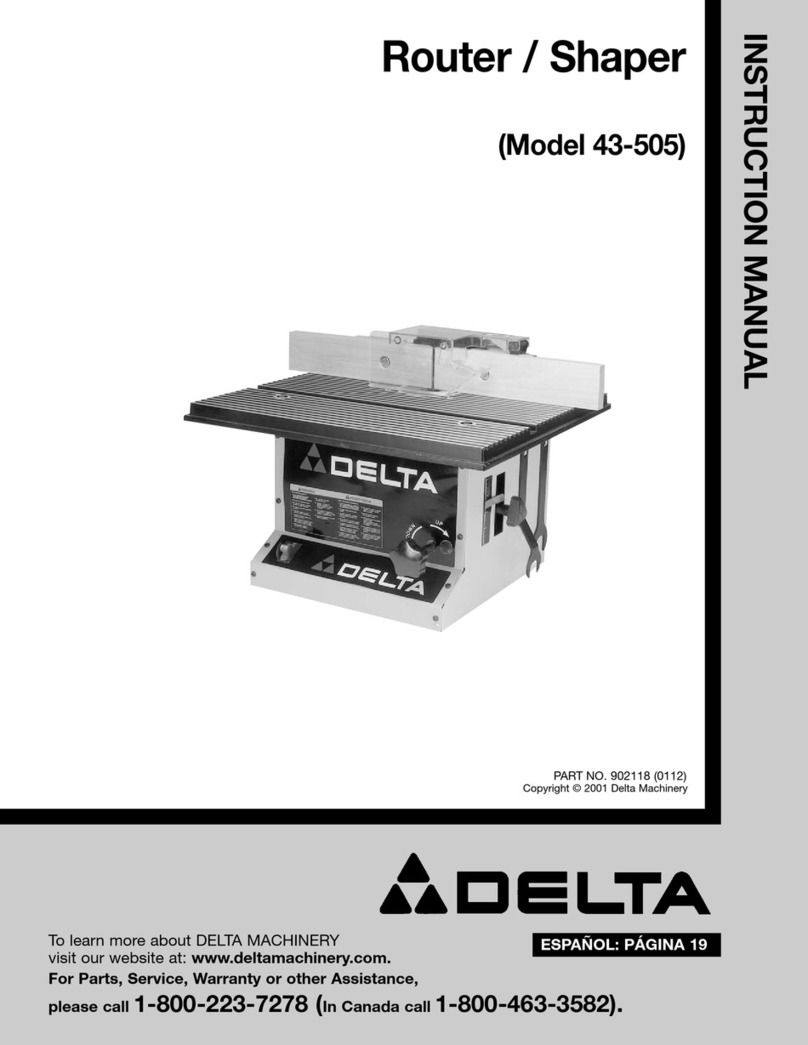
Delta
Delta 902118 43-505 instruction manual

FLORABEST
FLORABEST 290902 Operation and safety notes
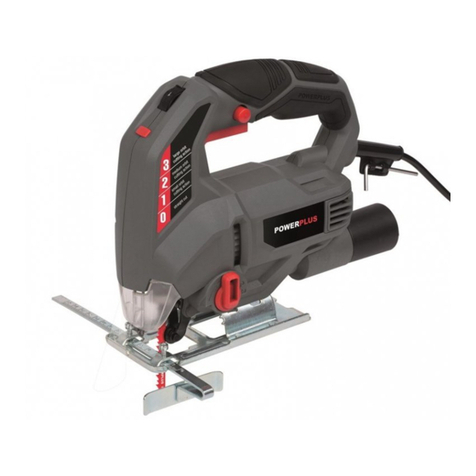
Powerplus
Powerplus POWE30015 manual
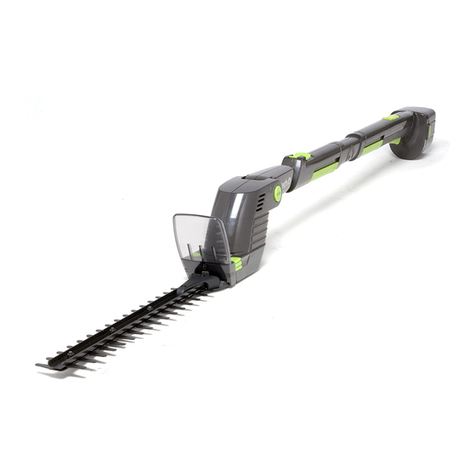
Gtech
Gtech HT04 Safety and instruction manual
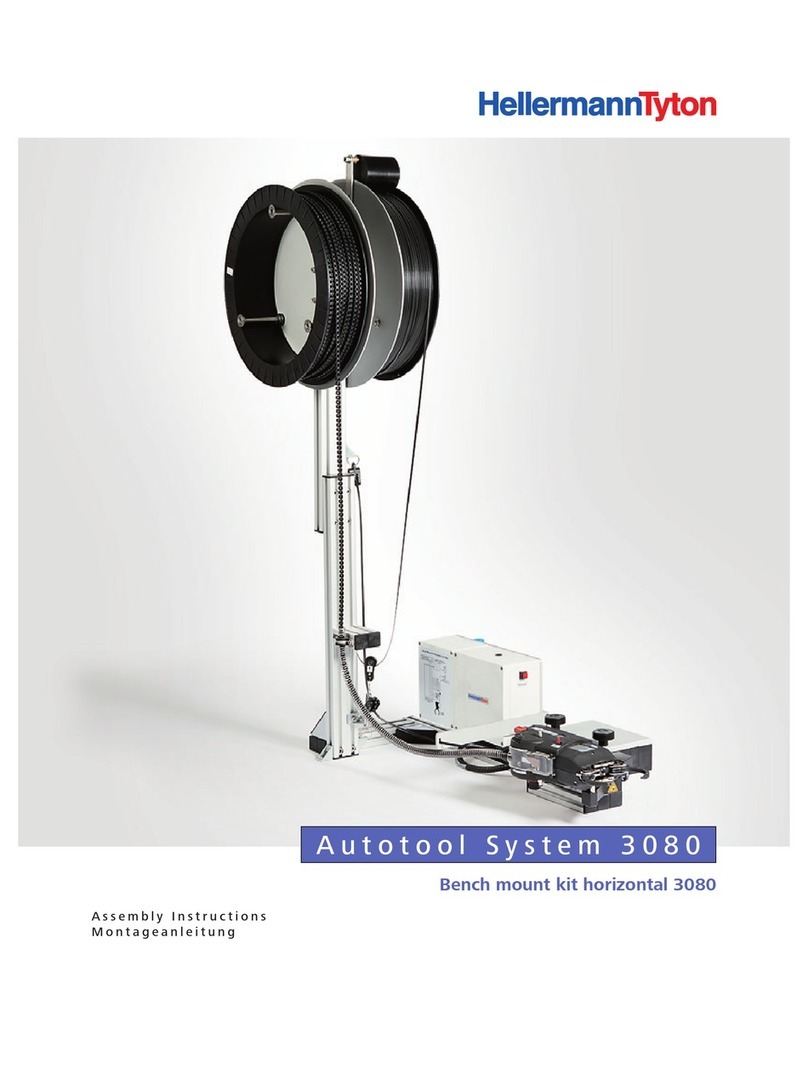
Hellermann Tyton
Hellermann Tyton Autotool System 3080 Assembly instructions
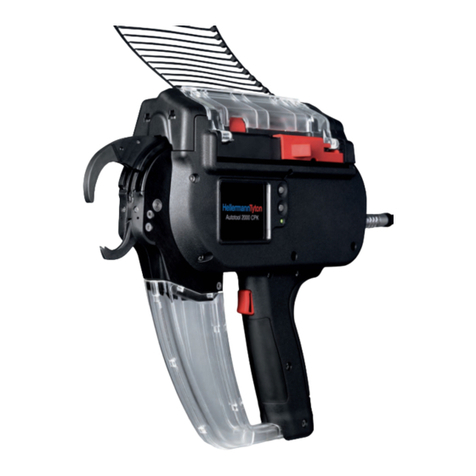
Hellermann Tyton
Hellermann Tyton Autotool 2000 CPK Automation Instructions
